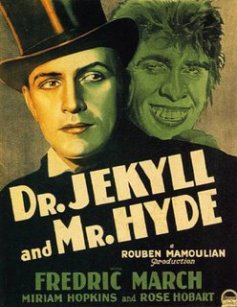Archive for March 2012
Final comments!
Posted on: March 28, 2012
Hi 🙂 These are the comments for this week…
http://jessywessywoooo.wordpress.com/2012/03/21/cosmetic-neurology-every-students-dream/#comment-39
http://psud6e.wordpress.com/2012/03/25/statistics-in-journalism/#comment-89
Multiple personality disorder now called Dissociative identity disorder (DID) is characterised by the presence of 2 or more personalities which regularly take control of an individual’s behaviour. Each personality is completely separate and distinct from the next, they can differ in age and gender and speak with different gestures, voices and mannerisms. DID is an extremely complex disorder thought to manifest due to a traumatic experience causing the repression of memories. The dissociative part is believed to be a coping mechanism, an individual with DID will disassociate with that memory in their conscious mind. This coping mechanism is a method the brain uses to protect itself from harmful and distressing memories, repressed memories never disappear but if they are pushed so far into the subconscious then they may come out in dysfunctional behaviours or other subconscious means.
Through research for this blog I came across a case of an American woman Gretchen who had been diagnosed with DID. DID had a huge effect on her life. When she was in distress as Gretchen she would switch to a personality that was emotionally stronger. She had another aggressive personality which would come out and be very critical of Gretchen, through this personality she would self-harm and be completely unaware of what had happened when she came back to herself (Gretchen) again. She began to write things down (each personality had their own handwriting style) as she would lose hours or sometimes a whole day when she was in a different personality, writing things down enabled her to catch up with what she had done whilst under the influence of her other personality.
A further case detailed a police officer John. An interesting point was made here about the ability of his dog to sense his change in personality. John had trained his dog to stay out of the living room. As soon as his personality changed whilst in the living room his dog would enter knowing that his ‘master’ was no longer present. As soon as John came back, his dog would leave the room as he had been trained to do.
A case study design is ideal for unusual clinical cases such as DID. Statistics show DID occurs in around 0.01-1% of the general population which means there is very little literature on the subject compared to other Axis I and II disorders (Ross, 2006). It is an extremely rare disorder according to the statistics but it has been frequently portrayed in popular culture. Sybil (1976) was based loosely on the life of Shirley Ardell Mason, a woman with 16 different personalities. Norman Bates’ character in Psycho (1960) had a dual personality as did the narrator in Fight Club (1999). The disorder is also depicted in the Robert Louis Stevenson novel The Strange Case of Dr Jekyll and Mr Hyde, a story of a lawyer with split personalities, one good and one evil.
Due to its rarity case studies show their strengths well when studying individuals this way. The majority of what we know about DID is down to case studies and the detailed and in-depth knowledge they can bring. Their focus on the individual rather than the ‘generalisable’ population allows for variables that may have been overlooked in an experiment to be uncovered. Case studies are often criticised for their lack of generalisability, selective bias and subjective interpretation but used in the right setting they are a very valuable method of research.
Ref:
Ross (2006) http://www.springerlink.com/content/q372704220t8642t/
Comments for Semester 2, Week 8!
Posted on: March 13, 2012
Hi, links for the comments for this week 🙂
http://psuc48.wordpress.com/2012/03/11/fed-up-of-being-skint/#comment-36
http://arbe91.wordpress.com/2012/03/11/can-causation-be-assumed-using-correaltion/#comment-53
http://psud6e.wordpress.com/2012/03/10/what-is-average/#comment-69
http://ellies1mpson.wordpress.com/2012/03/11/218/#comment-70
In the Psychology world communication between groups in an independent measures design can be something of a disaster. It can cause diffusion, whereby the act of someone from one treatment condition talking to someone in the conflicting condition can cause treatment effects to spread across groups as those learning of the different treatment may start to filter in a bit of what they’ve found out. This can make any possible difference in treatments decrease.
Compensatory equalization can occur. If in a research study a treatment group was administered a new drug for depression and the control group was given no intervention at all then the control group (upon finding out) may demand that they receive the same treatment as the experimental condition. If researchers choose to meet this demand then they have eliminated their control group and are left without a comparison for the remainder of the study.
Communication between groups can also affect performance both positively and negatively. It can cause compensatory rivalry whereby the control group increases their efforts in retaliation so results are unnaturally high therefore showing little difference between groups. It can also go the opposite way and cause resentful demoralization where the control group will in effect give up and intentionally decrease their participant effort due to resentment of the experimental groups receiving special treatment causing control results to fall lower than expected and allowing a possible Type 1 error to occur. Schwartz et al. (2001) conducted research into effects of exercise on fatigue for patients undergoing chemotherapy. They specifically chose a one-group design with no control to avoid potential compensatory equalization effects and resentful demoralization.
Communication between groups can have very serious effects in real world scenarios. To prevent bias in a trial the jury is on rare occasions ordered to be sequestered to allow for an objective decision, this is the total isolation of a jury. In the case of the George Huguely V murder trial (George Huguely was found guilty of the 2nd degree murder of Yeardley Love on February 22nd 2012 and sentenced to 26 years) great precautions were taken to pick a jury. Huguely’s lawyers requested a sequestered jury but the judge chose to pick a jury that swore under oath they had done all they could to shield themselves from the vast amount of media coverage the case had created. The murder of Yeardley Love has received huge attention by the media and many thought it impossible to find a single juror that wasn’t aware of the case. In the end the 12 jurors picked had all heard of the case and they were carefully selected as individuals who did not possess any fixed prejudicial notions.
http://www.cltv.com/topic/bs-md-huguely-jury-20120220,0,13726.story

